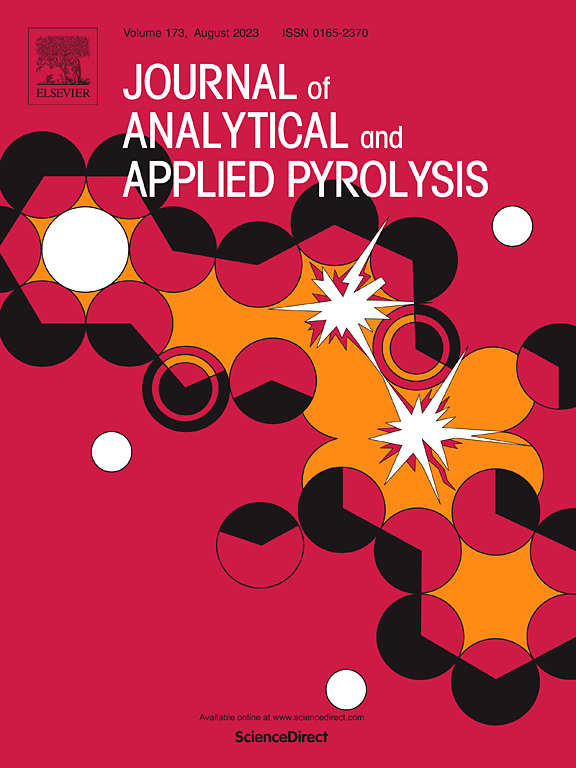四溴双酚A-二(2,3-二溴丙基醚)热解过程中溴的归宿:实验与计算相结合的研究
IF 5.8
2区 化学
Q1 CHEMISTRY, ANALYTICAL
引用次数: 0
摘要
溴化阻燃剂是废旧电气电子设备的关键成分,深入了解溴的迁移机制对废旧电气电子设备的热化学回收至关重要。四溴双酚a -双(2,3-二溴丙基醚)(TBBPA-DBPE)是近年来在WEEE中广泛应用的新型BFR,而TBBPA-DBPE热化学回收过程中Br的转化鲜有报道。本研究通过实验和密度泛函理论(DFT)计算相结合的方法,研究了TBBPA-DBPE热解生成含br产物的分解机理。TBBPA-DBPE热解的主要含br产物为HBr、1,2,3-三溴丙烷和溴苯酚。在热解初始阶段,TBBPA-DBPE主要发生C-O和C-Br键的均裂反应,生成1,2,3-三溴丙烷。随后,Br自由基和H原子与TBBPA-DBPE及其中间体反应生成各种含Br产物,包括HBr、2,4,6-三溴苯酚和2,6-二溴苯酚。值得注意的是,2,6-二溴酚自由基是通过C-O偶联反应形成溴化二恶英的关键前体。本研究为报废电子电气设备热化学处理过程中Br的管理提供了理论依据。本文章由计算机程序翻译,如有差异,请以英文原文为准。
The fate of bromine during pyrolysis of tetrabromobisphenol A-bis(2,3-dibromopropyl ether): A combined experimental and computational study
A thorough comprehension of the migration mechanism of Br is essential for the thermochemical recycling of waste electrical and electronic equipment (WEEE), given that brominated flame retardants (BFRs) are key components in WEEE. Tetrabromobisphenol A-bis(2,3-dibromopropyl ether) (TBBPA-DBPE) is a new BFR that has been widely used in WEEE in recent years, whereas the transformation of Br during the thermochemical recycling of TBBPA-DBPE has been rarely reported. In this study, the decomposition mechanism of TBBPA-DBPE pyrolysis to generate Br-containing products was investigated by combining experiments and density functional theory (DFT) calculations. The primary Br-containing products of TBBPA-DBPE pyrolysis were HBr, 1,2,3-tribromopropane, and bromophenols. During the initial stage of pyrolysis, TBBPA-DBPE predominantly undergoes the homolysis of the C–O and C–Br bonds, resulting in the formation of 1,2,3-tribromopropane. Subsequently, Br radicals and H atoms can react with TBBPA-DBPE and its intermediates to produce various Br-containing products, including HBr, 2,4,6-tribromophenol and 2,6-dibromophenol. Notably, the 2,6-dibromophenol radical serves as a critical precursor for the formation of brominated dioxins via C–O coupling reactions. This research provides a theoretical basis for managing Br during the thermochemical treatment of WEEE.
求助全文
通过发布文献求助,成功后即可免费获取论文全文。
去求助
来源期刊
CiteScore
9.10
自引率
11.70%
发文量
340
审稿时长
44 days
期刊介绍:
The Journal of Analytical and Applied Pyrolysis (JAAP) is devoted to the publication of papers dealing with innovative applications of pyrolysis processes, the characterization of products related to pyrolysis reactions, and investigations of reaction mechanism. To be considered by JAAP, a manuscript should present significant progress in these topics. The novelty must be satisfactorily argued in the cover letter. A manuscript with a cover letter to the editor not addressing the novelty is likely to be rejected without review.

 求助内容:
求助内容: 应助结果提醒方式:
应助结果提醒方式:


